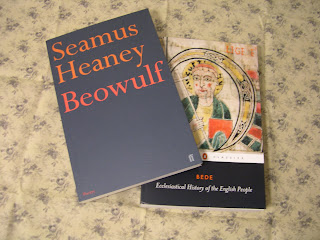When we were teenagers, my best friend and I would spend hours excitedly preparing to go out to a party or nightclub. We would spend an entire afternoon in her bedroom going through boxes of make up deciding what to use. Clothes would be tried on, discarded and tried on again as we attempted to find the perfect party ensemble. In a flurry of perfume, hairspray and glitter we would listen to saccharine pop and dream about the perfect boy that we would meet during the perfect evening.
We would arrive at the party with our expectations full to the brim. Bursting with nerves and excitement we would enter the room and search for people we knew. Gradually, people would start dancing and I would slowly fall back down to earth. Tugging at my ill-fitting clothes and looking for a quiet corner I would scan the room and see people pairing off and realise that actually the party in my head was a different place. The best part was sitting in my best friend's utility room eating a bowl of Alpen, dissecting the evening before heading upstairs to a bed that her mum had put a hot water bottle in. I would snuggle down under the duvet and store my dreams for the next time whilst feeling a little bit closer to them coming true.
Invitation to the Waltz tells the story of Olivia Curtis who is invited to attend her first dance at the age of seventeen. Like myself, and all teenage girls, she excitedly plans what she is going to wear and takes the red material that she received for her birthday to the local dressmaker to create something dazzling for the dance. Olivia is a thoughtful girl and unlike her sister Kate is not so comfortable with her appearance. Kate spends time thinking about and planning her appearence with an air of expertise whereas Olivia awkwardly tries her dress on back to front and pours too much perfume on to her hair.
The dance is hosted by the Spencers who are local aristocracy. Lady Spencer's jewels dazzle Olivia as she "was handsomer even than Queen Mary, in the same sculptural style, but of a more classical cast of features. A gown of silver brocade moulded her opulent but well-controlled contours; a parure of diamonds and sapphires set off the imposing architecture of her bosom and a tiara flashed above the severely carved wings of her grey hair". Olivia dances with a succession of old men all playing to her sympathetic nature and between dances she anxiously aims for the safety of the cloakroom unless she is intercepted by another ill-suited partner.
As her sister Kate finds the perfect boy at her perfect dance, Olivia grapples around through the various representatives of masculinity present at the dance. She encounters the poet Peter who is paranoid, drunk and vulnerable. She dances with Tim the young man who was blinded in battle in the first world war and she has an altercation with the roguish, wealthy and arrogant Archie. Finally, Olivia meets Rollo Spencer out on the terrace with whom she feels at ease for the first time during the night. He is honest, charming and, irritatingly, attached to Nicola. Eventually, Olivia falls asleep on a chair as she waits for her sister to finish dancing.
As Olivia is able to recount the entire evening to her mother with youthful and innocent enthusiasm, her sister Kate is detached. Through the establishment of an understanding with Tony Heriot she has left Olivia behind, "I've left it all behind me. She looked at Olivia lying back on the settee, her eyes black and small with sleep. We won't be able to talk over the dance, exchanging every detail for hours and days. I can't share tonight with her. Olivia's too young." The dance is the catalyst for change for both the sisters, their relationship with each other has shifted as Olivia too realises that Kate has gone down a path which Olivia cannot yet follow, "I'm left behind, but I don't care. I've got plenty to think about too."
Lehmann's portrayal of a young girls' first dance pierces to the heart of the experience. The social anxieties, the pressure and the excitement are all enmeshed. Olivia is thrown into a social melting pot between the sexes for the first time and slowly she starts to learn about herself. It is here for the first time that she notices a class difference between herself and her friend Marigold Spencer "The friends she flew to join now were not their friends. They were those who would tread with her the prosperous, mapped road of coming out, whose mysteries and allurements were to be the natural setting of their days and nights." Olivia realises her middle-class status for the first time and what this will mean for her.
This novel is a beautiful and insightful account of a young girl poised on the edge of adulthood - slowly testing herself in the wider world but still able to flee back to the comfort of childhood. As I dipped my toe in to the water of parties and clubbing, I still longed for the bowl of Alpen, my cuddly toy cat and the comfort of a hot water bottle at the end of the night. And it is this aspect of being in between, of waiting, of being ready but of not being ready that Rosamond Lehmann perfectly portrays.

























